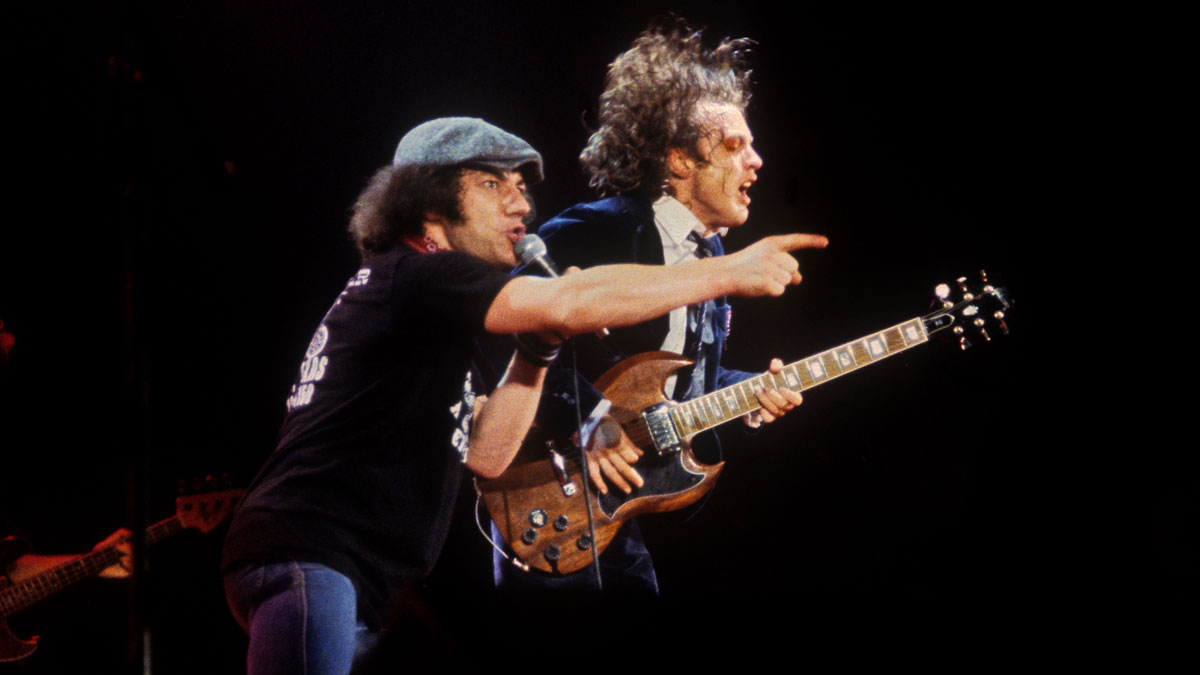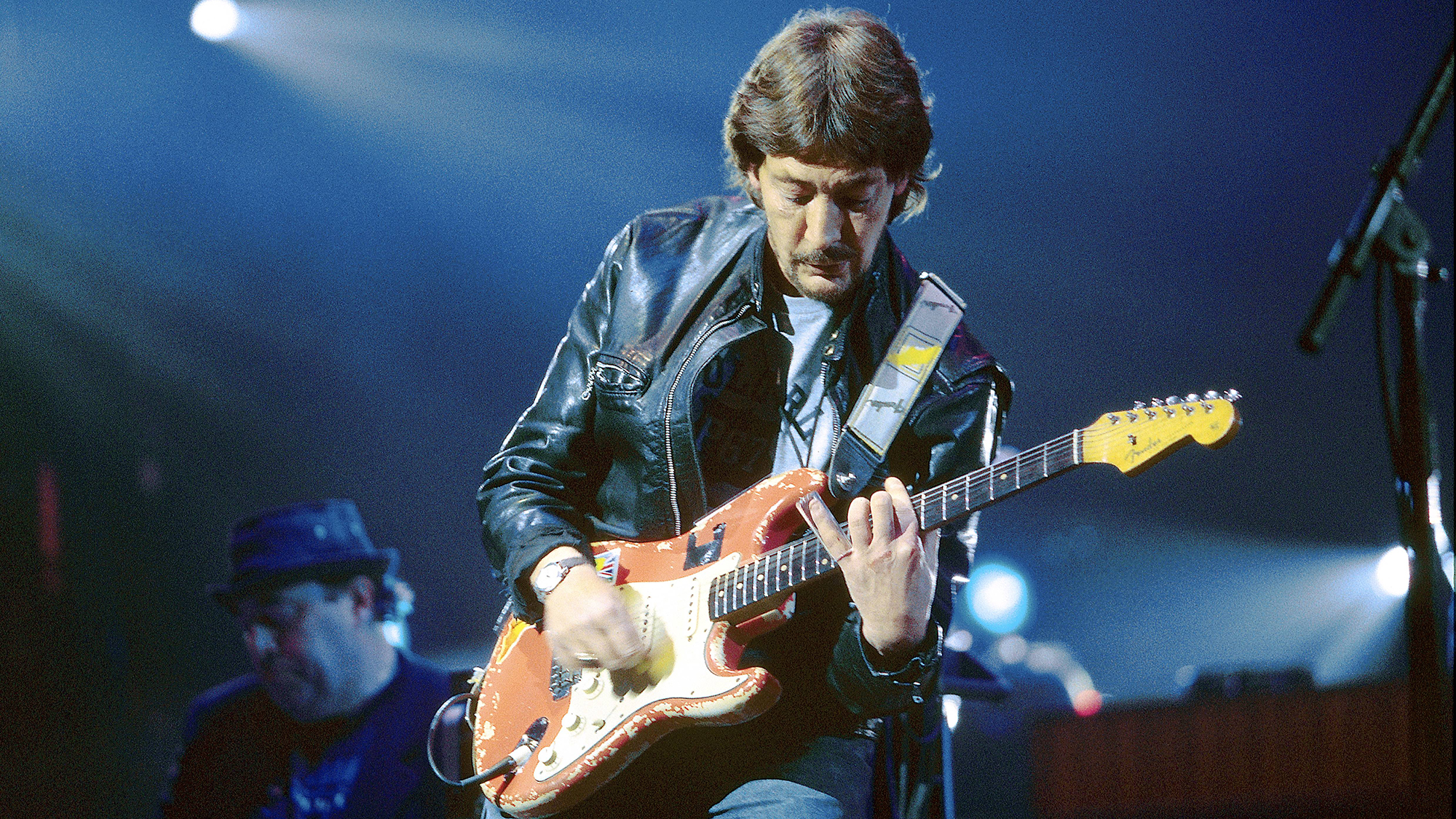How to play Back in Black on guitar
Learn one of the greatest riffs of all time from Australian rock legends AC/DC

The guitar nucleus of AC/DC lies in the two brothers who formed the band in 1973. With lead duties going to ‘school boy’ Angus Young and rhythm guitar to the late Malcolm, they always had a boogie blues-based approach to making music.
It’s the title track from frontman Brian Johnson’s first outing with the band that we’re looking at here – 1980’s Back in Black, which is widely regarded as one of the greatest riffs of all time. It’s a simple riff, jammed around easy open E, D and A chords, interspersed with two single-note licks.
Formed of a run of 16th notes, the opening single-note line can pose a challenge at full speed. Practiced slowly, however, it’s much easier, so slow practice is advised.
The closing line is also on the fiddly side as you play an unusual offbeat rhythm and a bit of a jump as you move between the various notes. Use your first and fourth fingers to manage those jumps and listen carefully to the original track to pick up that tricky rhythm.
This is a riff of three parts. Practice the powerchords, blues scale line and syncopated outro separately at first.
- Appears at: 0:06-0:27
- Tempo: 91bpm
- Key/scale: E blues scale
- Main techniques: Open position powerchords, blues scale licks, syncopated riffing
Get the tone
The tone in Back in Black is a mix of Malcolm Young’s only very slightly overdriven sound and brother Angus Young’s dirtier tone. If you’re playing with another guitarist then take this approach. If you’re playing alone, opt for a medium overdrive tone, somewhere between Angus and Malcolm’s tones.
Generally, we’d recommend a bridge humbucker, but try your other pickups, too – you may just get closer to the combined sound.
All the latest guitar news, interviews, lessons, reviews, deals and more, direct to your inbox!
Chris was Editor of Total Guitar magazine from 2020 until its closure in 2024, when he became Lesson Editor for Guitar World, MusicRadar and Guitar Player. Prior to taking over as Editor, he helmed Total Guitar's world-class tab and tuition section for 12 years, helping thousands of guitarists learn how to play the instrument. A former guitar teacher, Chris trained at the Academy of Contemporary Music (ACM) in Guildford, UK, and held a degree in Philosophy & Popular Music. During his career, Chris interviewed guitar legends including Brian May and Jimmy Page, while championing new artists such as Yungblud and Nova Twins. Chris was diagnosed with Stage 4 cancer in April 2024 and died in May 2025.

